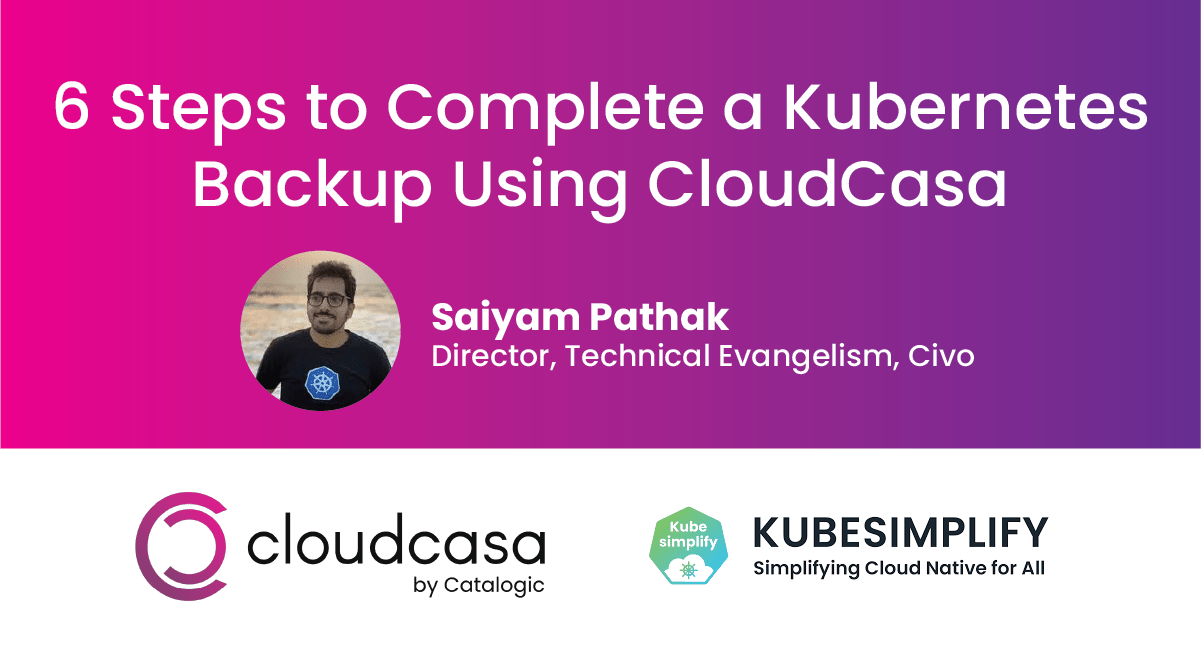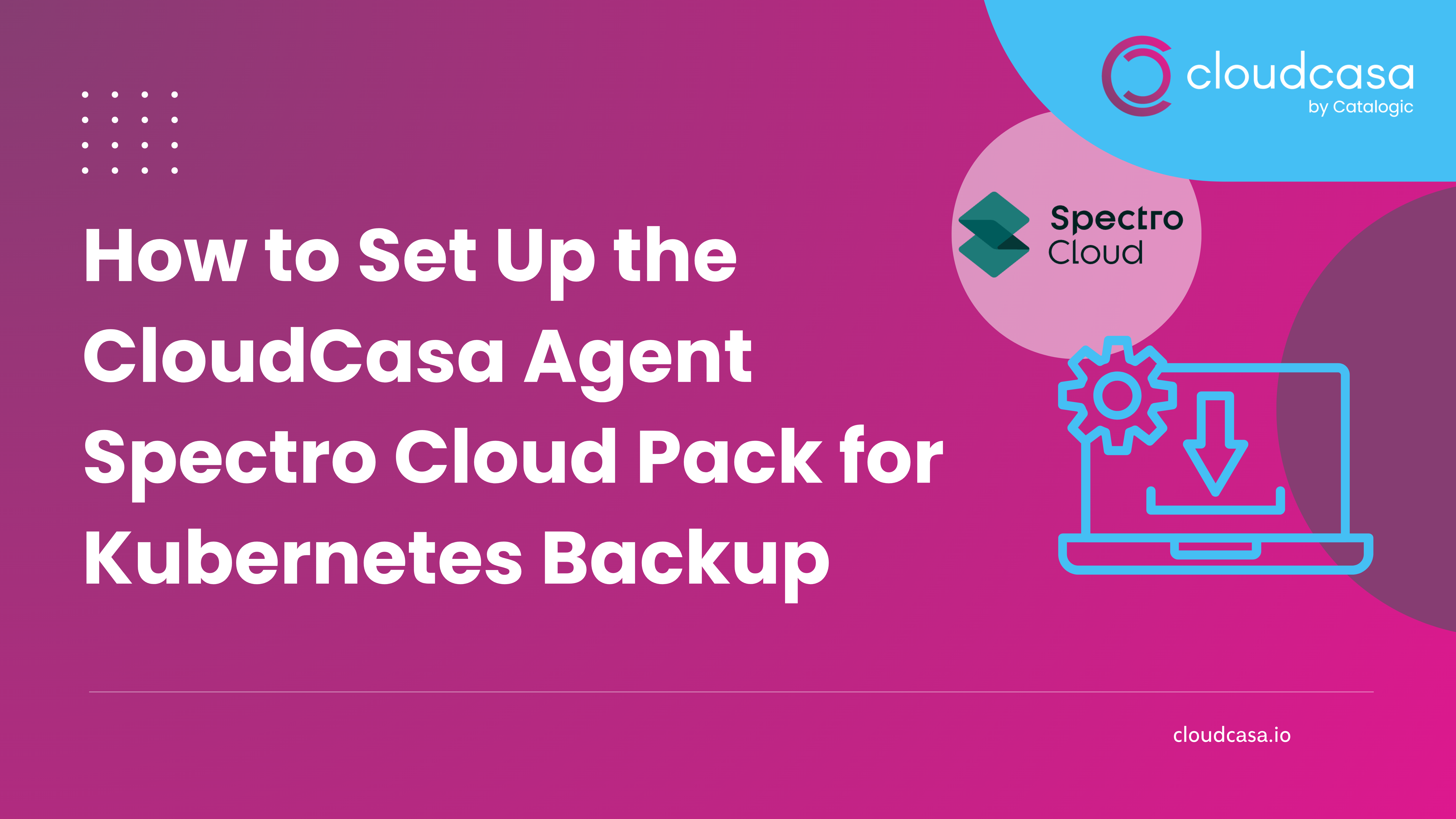Steps to complete a Kubernetes backup
We are excited to have Saiyam Pathak, Director of Technical Evangelism at Civo, sign up for CloudCasa and blog the simple steps required to complete a Kubernetes backup and restore of a Kubernetes cluster. For those that don’t know Saiyam, he has a passion for writing and talking about Kubernetes and cloud native technologies to make them more accessible for developers. Saiyam is a CNCF ambassador and a cloud native blogger with his own Cloud Native Simplified YouTube channel. He has worked on implementing Kubernetes solutions in many different organizations, so we were pleased to have him test drive CloudCasa and write about it.
In this KubeSimplify blog, Kubernetes backup using CloudCasa, Saiyam documents the simple set steps to complete a kubernetes backup of a Kubernetes cluster:
- Step 1 – Creating CloudCasa account
- Step 2 – Adding a cloud account
- Step 3 – Adding a cluster
- Step 4 – Define backups
- Step 5 – Running the backup
- Step 6 – Restore
- Advanced Restore
- Pricing

CloudCasa is a powerful and easy to use backup service that allows Kubernetes users to run CSI snapshots and backups across unlimited clusters for free. Further, CloudCasa improves your cyber resilience with immutable backups of Kubernetes clusters and cloud accounts.
Give CloudCasa a try and sign up for the Free Plan (no credit card or payment method needed) and follow Saiyam’s 6 steps for Kubernetes backup using CloudCasa.
While you are at it, please consider sponsoring the new KubeSimplify blog and follow @KubeSimplify.
You can learn more about Saiyam Pathak on the CNCF ambassador site.


